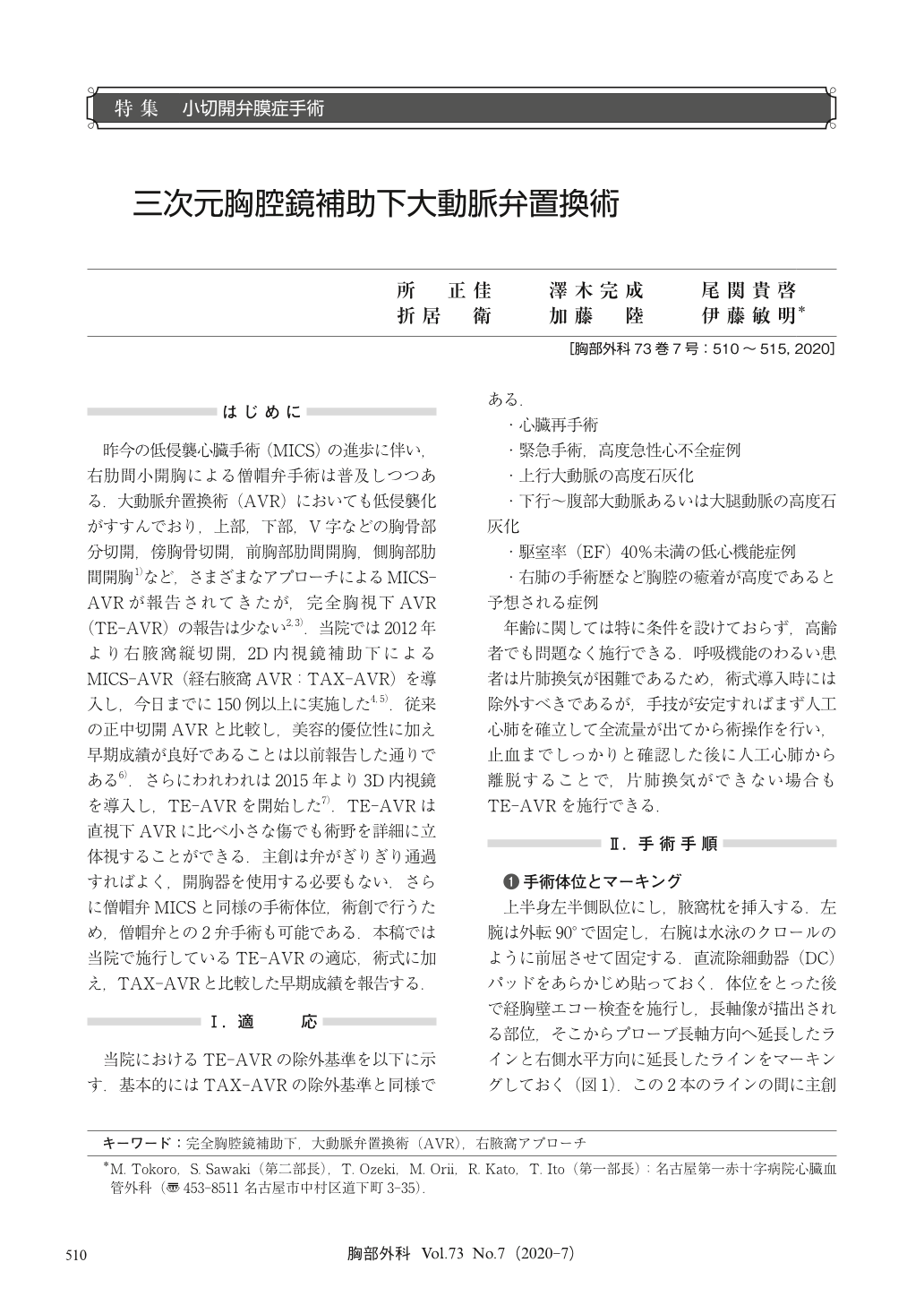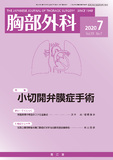Japanese
English
- 有料閲覧
- Abstract 文献概要
- 1ページ目 Look Inside
- 参考文献 Reference
昨今の低侵襲心臓手術(MICS)の進歩に伴い,右肋間小開胸による僧帽弁手術は普及しつつある.大動脈弁置換術(AVR)においても低侵襲化がすすんでおり,上部,下部,V字などの胸骨部分切開,傍胸骨切開,前胸部肋間開胸,側胸部肋間開胸1)など,さまざまなアプローチによるMICS-AVRが報告されてきたが,完全胸視下AVR(TE-AVR)の報告は少ない2,3).当院では2012年より右腋窩縦切開,2D内視鏡補助下によるMICS-AVR(経右腋窩AVR:TAX-AVR)を導入し,今日までに150例以上に実施した4,5).従来の正中切開AVRと比較し,美容的優位性に加え早期成績が良好であることは以前報告した通りである6).さらにわれわれは2015年より3D内視鏡を導入し,TE-AVRを開始した7).TE-AVRは直視下AVRに比べ小さな傷でも術野を詳細に立体視することができる.主創は弁がぎりぎり通過すればよく,開胸器を使用する必要もない.さらに僧帽弁MICSと同様の手術体位,術創で行うため,僧帽弁との2弁手術も可能である.本稿では当院で施行しているTE-AVRの適応,術式に加え,TAX-AVRと比較した早期成績を報告する.
Totally endoscopic aortic valve replacement (TE-AVR) is still challenging, and few series report exist even today. In 2015, we started to use three-dimensional (3D) endoscope and we also introduced TE-AVR.
Patient is placed in the partial left lateral position. The main wound is created in right antero-lateral 4th intercostal space through 4 cm skin incision. No rib spreader is used. 3D endoscope is inserted on the mid-axillary line. A 5 mm trocar was inserted in the 3rd intercostal space, thus creating 3-port setting similarly to that for endoscopic mitral valve surgery. All sutures are tied using a knot-pusher.
We have performed 106 cases of TE-AVR. Compared with transaxillary AVR, there were no significant differences between the 2 groups in the hospital deaths or MACCE. Postoperative hospital stays became shorter in totally endoscopic group.
In conclusion, TE-AVR was possible through 3 ports created in the right antero-lateral chest similarly to the endoscopic mitral valve surgery. Transaxillary approach seemed to be suitable for the TE-AVR. By adopting common approach for both mitral valve surgery and aortic valve surgery, endoscopic double valve surgery could be performed seamlessly.

© Nankodo Co., Ltd., 2020


